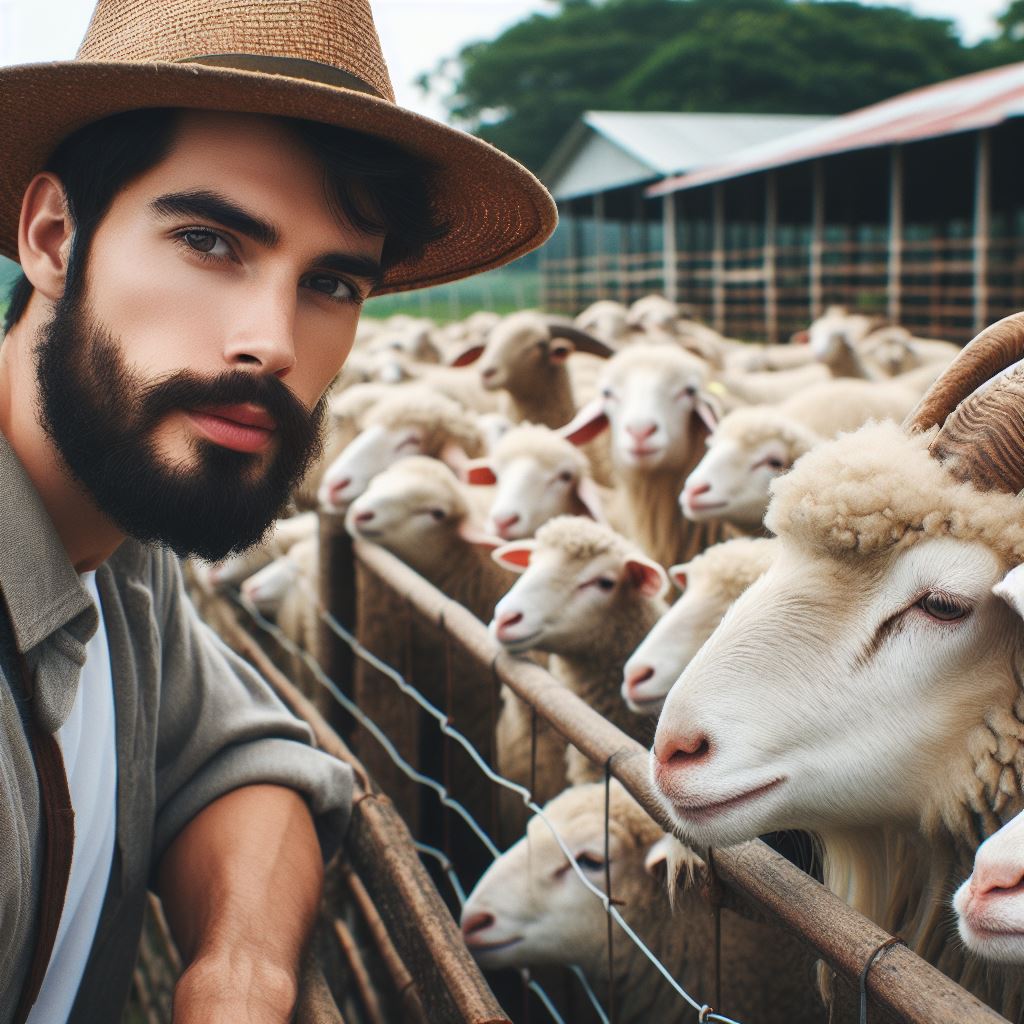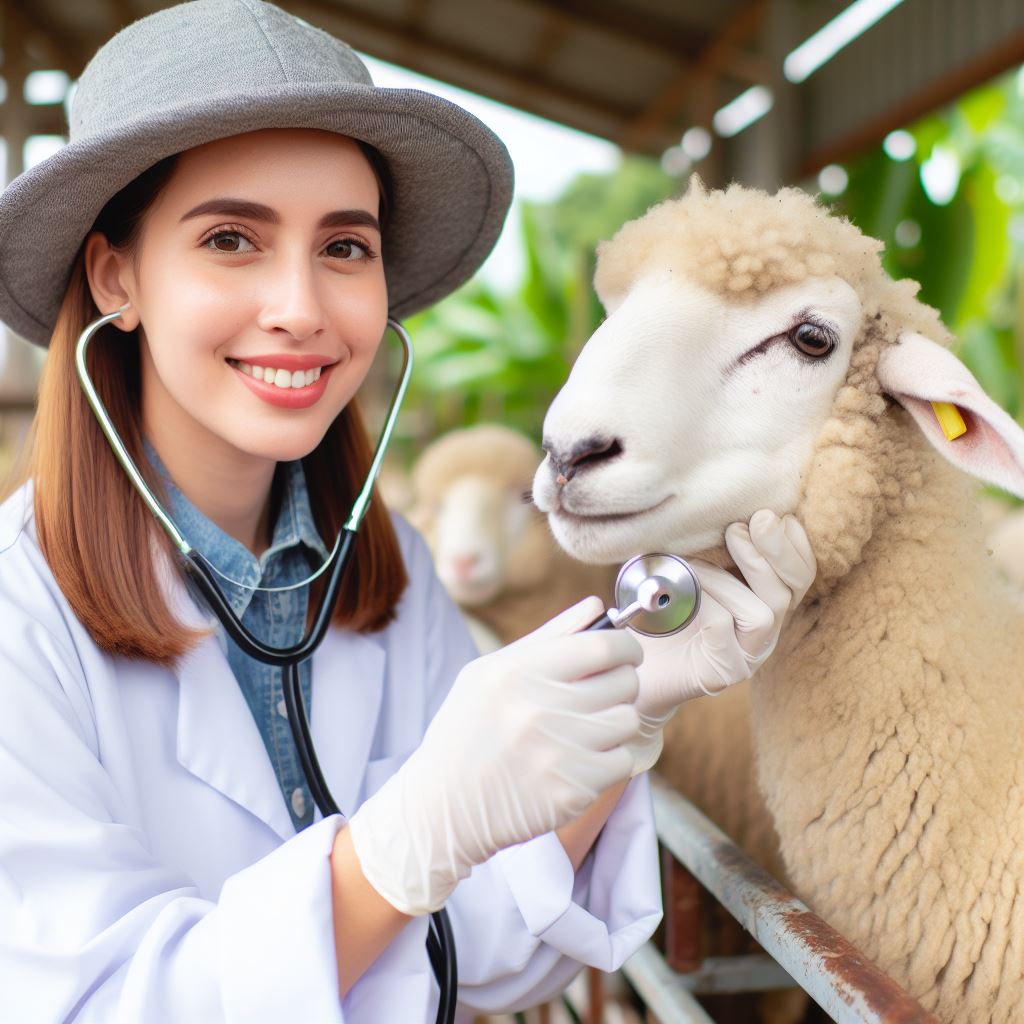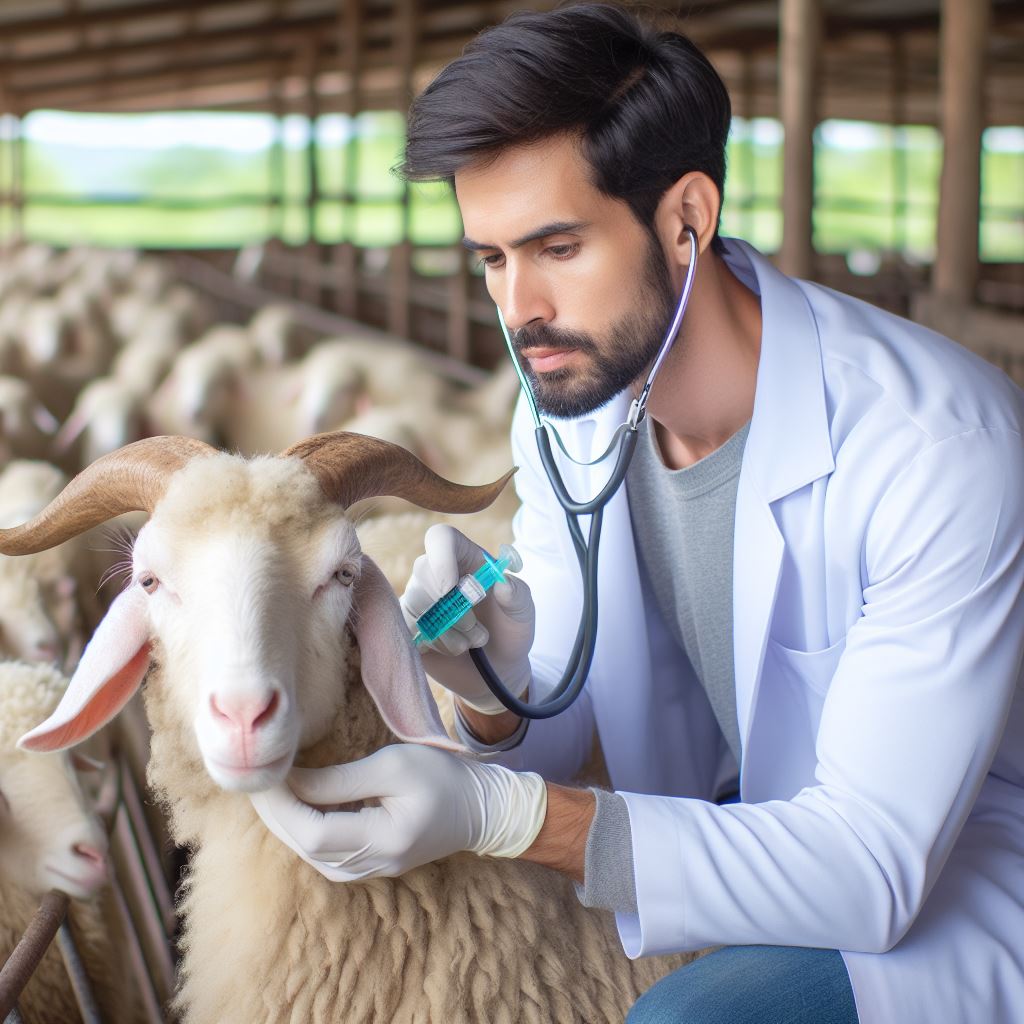Introduction
Ensuring the quality and productivity of your flock, this blog post offers essential Breeding Tips for Sheep beginners.
Dive into the world of sheep breeding with our comprehensive starter guide.
From selecting breeding stock to ensuring optimal health, discover essential tips for successful sheep reproduction.
Whether you’re a novice or experienced shepherd, this guide provides insights to enhance your flock and breeding practices.
A. Importance of proper breeding in sheep farming
Proper breeding maximizes the genetic potential of the flock, leading to improved wool, meat, and milk production.
Selecting healthy, desirable traits enhances lambing rates, wool quality, and disease resistance.
Thoughtful breeding practices contribute to sustainable flock management, ensuring robust, high-performing generations that meet market demands and economic goals.
It also enhances disease resistance and overall flock health.
B. Purpose of the blog post
This blog post serves as a comprehensive guide for novice sheep farmers, offering valuable insights and tips on successful breeding techniques.
Selecting the Right Rams and Ewes
When it comes to breeding sheep, selecting the right rams and ewes is crucial for success.
Breeding healthy and genetically superior animals will not only improve the overall quality of your flock but also maximize productivity and profitability.
In this section, we will discuss the traits to consider when selecting rams and ewes for breeding, as well as provide tips for evaluating potential breeding sheep.
A. Traits to Consider When Selecting Rams and Ewes for Breeding
1. Health and Vitality
It is essential to choose animals that are in good health and exhibit high vitality.
Look for sheep that have shiny coats, bright eyes, and active physical behavior.
Avoid individuals with signs of illness, lameness, or poor body condition.
Transform Your Agribusiness
Unlock your farm's potential with expert advice tailored to your needs. Get actionable steps that drive real results.
Get Started2. Conformation and Structure
The body structure and conformation of sheep play a significant role in their productivity and overall performance.
Select rams and ewes with well-balanced body proportions, strong legs, and straight backs.
This will ensure optimal movement and reduce the risk of structural issues in lambs.
3. Fertility and Breeding History
Assessing the fertility and breeding history of potential breeding sheep is vital in ensuring successful reproduction.
Choose rams and ewes that have a proven track record of producing healthy offspring and achieving good conception rates.
This information can be obtained from breeding records or by consulting with experienced breeders.
B. Tips for Evaluating Potential Breeding Sheep
1. Physical Examination
Thoroughly examine the animal’s physical characteristics, including body condition, teeth, and reproductive organs.
Check for any abnormalities, such as lumps, discharges, or deformities, which could indicate underlying health issues or breeding problems.
2. Pedigree Analysis
Analyzing the pedigree of a sheep can provide valuable insights into its genetic background and potential for producing desirable traits.
Look for ancestors with strong breeding records, good conformation, and proven fertility.
This information can be obtained from breed association records or pedigree certificates.
3. Consultation with Experienced Breeders
Seek advice and guidance from experienced breeders who have a proven track record in your chosen breed.
They can offer valuable insights into the strengths and weaknesses of potential breeding sheep and provide recommendations based on their own breeding experiences.
By carefully considering the health, vitality, conformation, structure, fertility, and breeding history of rams and ewes, you can increase the likelihood of producing healthy and genetically superior lambs.
Additionally, performing a physical examination, analyzing pedigrees, and consulting with experienced breeders will help you make informed decisions when selecting breeding sheep.
Remember, breeding sheep is a long-term investment, and selecting the right animals is crucial for the success and sustainability of your flock.
Take your time, do your research, and prioritize quality over quantity.
By following these tips, you are on your way to building a strong and productive breeding program.
Read: Maximizing Profit in Small Scale Poultry
Breeding Management
Breeding sheep requires proper management to ensure successful outcomes and maintain the health and productivity of the flock.
In this section, we will explore various aspects of breeding management for sheep.
A. Understanding the sheep breeding cycle
To effectively manage the breeding process, it is essential to understand the sheep breeding cycle.
Sheep have an estrus cycle, which is the period when they are receptive to mating.
During this cycle, ewes exhibit different signs to indicate they are in heat.
Showcase Your Farming Business
Publish your professional farming services profile on our blog for a one-time fee of $200 and reach a dedicated audience of farmers and agribusiness owners.
Publish Your Profile1. Estrus cycle and heat signs
Ewes usually experience a 16 to 17-day estrus cycle, during which they come into heat for approximately 24 to 36 hours.
Common heat signs include restlessness, increased vocalization, mounting other sheep, and swelling and reddening of the vulva.
2. Optimal breeding time
Identifying the optimal breeding time is crucial to maximize breeding success.
The best time to breed sheep is within 12 to 24 hours after the onset of estrus.
Monitoring heat signs and observing the ewes closely will help determine the ideal breeding time.
B. Controlled Breeding
There are two main methods of controlled breeding: natural service and artificial insemination.
1. Natural service method
The natural service method involves allowing the ram to mate with the ewes naturally.
It is the traditional way of breeding sheep and mimics their natural behavior.
However, careful ram management is essential to prevent overbreeding and ensure successful mating.
2. Artificial insemination
Artificial insemination (AI) is a technique where semen from a selected ram is collected and then artificially deposited into the ewes’ reproductive tract.
AI offers several advantages, including the ability to use superior genetics, disease control, and efficient use of rams.
However, it requires specialized skills and equipment.
C. Proper mating ratios
When planning for breeding, considering the ram to ewe ratio is crucial to achieve successful outcomes and maintain the overall well-being of the flock.
1. Ram to ewe ratio considerations
The recommended ratio is one ram for every 30 to 50 ewes.
This ensures adequate mating opportunities without excessive strain on the ram’s reproductive capability.
2. Group mating vs. individual mating
Group mating involves putting a group of ewes with one or two rams for a specific duration.
Individual mating, on the other hand, involves mating individual ewes with designated rams.
The choice depends on various factors, such as breed, ram’s fertility, and management preferences.
D. Managing breeding records
Recording and tracking breeding information is essential for effective breeding management.
1. Recording breeding dates
Accurate recording of breeding dates helps determine lambing dates and aids in monitoring the breeding cycle.
It allows for better flock management and helps identify any issues that may arise.
2. Tracking mating results
Keep track of mating results, such as successful pregnancies and the number of lambs born, to assess the fertility of the flock and identify any breeding concerns.
This information can guide future breeding decisions.
Generally, proper breeding management is crucial for successful sheep breeding.
Understanding the sheep breeding cycle, choosing the appropriate breeding method, considering mating ratios, and maintaining accurate breeding records are key aspects that need careful attention.
By implementing effective breeding management practices, sheep breeders can enhance the productivity and overall health of their flocks.
Read: The Role of Technology in Poultry Farming
Pregnancy and Lambing
Pregnancy and lambing are crucial stages in sheep breeding that require careful attention and proper management.
This section will provide essential tips and guidelines to ensure a successful lambing season.
A. Confirming pregnancy in ewes
Knowing if your ewes are pregnant is essential for proper planning and care.
There are two main methods to confirm pregnancy:
- Physical signs: Observing the ewes for changes in appetite, behavior, and body shape can provide initial indications of pregnancy.
- Ultrasound or blood tests: For accurate confirmation, it is best to consult a veterinarian who can perform an ultrasound or blood tests.
B. Proper care for pregnant ewes
Pregnant ewes have increased nutritional requirements, and their health should be closely monitored.
Follow these guidelines:
- Adequate nutrition and supplementation: Provide a balanced diet containing high-quality forage and concentrates to meet the ewes’ increased demands.
- Regular health check-ups: Schedule regular visits with a veterinarian to monitor the ewes’ health, administer necessary vaccinations, and address any concerns.
C. Preparing for lambing
Lambing is a critical time that requires preparation to ensure a smooth and successful outcome.
Here’s what you should do:
1. Creating a comfortable lambing area
Prepare a clean, dry, and private space where the ewe can give birth undisturbed.
Providing a pen or a lambing jug can help create a safe environment.
2. Gathering necessary supplies
Stock up on essential lambing supplies such as clean towels, iodine for disinfecting the lamb’s navel, a lambing kit with necessary tools, and a heat lamp if needed.
3. Identifying potential complications and seeking professional assistance
Familiarize yourself with signs of dystocia (difficult birth) and other potential issues.
Have the contact information of a veterinarian ready for immediate assistance.
Showcase Your Farming Business
Publish your professional farming services profile on our blog for a one-time fee of $200 and reach a dedicated audience of farmers and agribusiness owners.
Publish Your ProfileBy confirming pregnancy, providing proper care, and preparing adequately for lambing, you can ensure the well-being of your ewes and increase the chances of successful lambing outcomes.
Read: Raising Ducks: An Alternative to Chickens

Post-lambing Care
In this section, we will discuss the important aspects of post-lambing care for sheep.
It is crucial to provide adequate care and attention to both the newborn lambs and the ewes during this critical period.
A. Caring for newborn lambs
1. Ensuring sufficient colostrum intake
After birth, lambs should be allowed to nurse within the first hour to receive the essential colostrum.
This is crucial for their immunity and overall health.
2. Monitoring health and growth
Regularly check lambs for any signs of illness or weakness.
Observe their growth to ensure they are thriving and gaining weight appropriately.
B. Ewe management after lambing
1. Proper nutrition and hydration
Ewes need a high-quality diet to maintain their health and produce milk for the lambs.
Provide a balanced diet that includes sufficient energy, protein, vitamins, and minerals.
Ensure access to clean water at all times.
2. Monitoring for any post-lambing complications
Keep a close eye on the ewes for signs of health issues such as mastitis, metritis, or retained placenta.
Promptly address any problems that may arise.
It is essential to provide a comfortable and clean environment for both the ewes and lambs.
A clean and well-ventilated lambing area reduces the risk of infections and promotes overall well-being.
Regularly observe the behavior of the ewes and their interaction with the lambs.
It is important to intervene if a ewe rejects her lamb or shows signs of aggression towards it.
Separating them may be necessary to ensure the lamb’s safety.
Additionally, it is crucial to practice good hygiene during this period.
Clean and disinfect the lambing pens regularly to prevent the spread of diseases.
Maintain proper biosecurity measures to minimize the risk of introducing pathogens into the flock.
As the lambs grow, they will gradually transition to solid feed.
Provide them with appropriate nutrition, such as creep feed, to support their development.
Offer them fresh, clean water and monitor their growth closely.
It is also essential to consider the future breeding goals of your flock during this period.
Evaluate the performance of your ewes and lambs and make informed decisions regarding breeding replacements and culling.
Essentially, post-lambing care is a critical phase in sheep breeding.
By ensuring the well-being of both the newborn lambs and the ewes, you can set the stage for a successful and productive flock.
Providing sufficient colostrum intake, monitoring health, proper nutrition, and vigilant management are vital aspects of post-lambing care.
Remember to maintain a clean and comfortable environment and practice good hygiene to minimize the risk of diseases.
With proper care, your sheep will thrive and contribute to the success of your breeding program.
Read: Poultry Behavior: Understanding Your Flock
Conclusion
- Ensure you have a good understanding of sheep anatomy and the different breeds.
- Select healthy and genetically sound sheep for breeding.
- Keep records of breeding dates, lambing, and health information.
- Provide a nutritious diet to ensure optimal health and reproductive capability.
- Keep the breeding area clean and free from parasites to prevent infections.
Continuously learn and seek guidance from experienced farmers to improve your breeding practices.
Embrace the wisdom of seasoned farmers, stay updated on industry innovations, and adapt to evolving practices.
This commitment fosters resilience, efficiency, and sustainable growth in your farming endeavors.
By following the provided tips, you increase your chances of successful sheep breeding endeavors.




